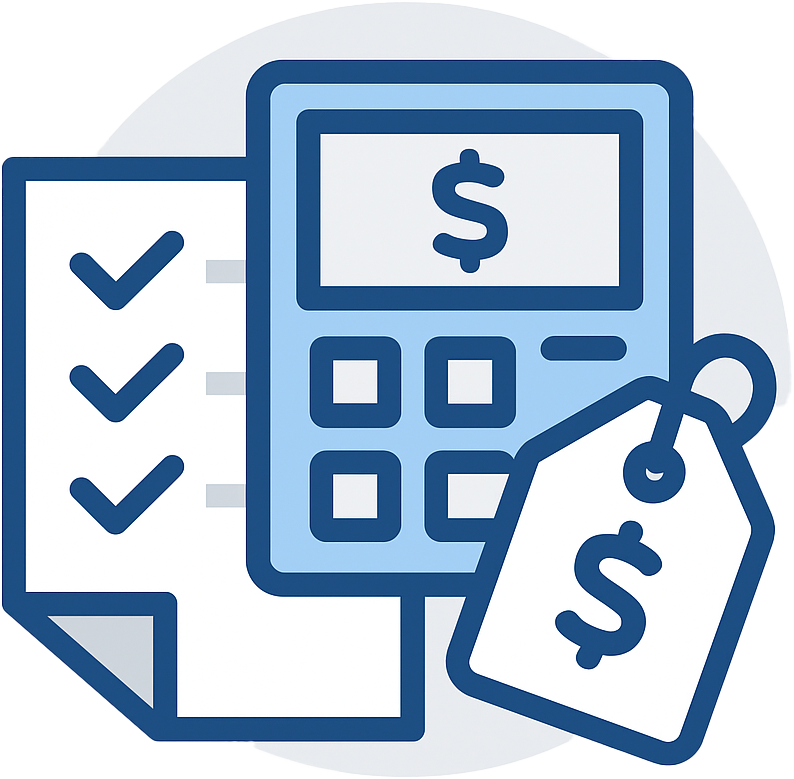Confused about stormwater sample holding times?
When it comes to taking stormwater samples used for testing, monitoring, or to be analyzed by a lab, many people out there aren't aware of the various instructions that must be followed. One of the most common rules that must be followed involves what are called "holding times" for stormwater samples. This concept trips a lot of people up. If you're unaware of what holding times are, trust me, you're not alone. Many people who have NPDES permits, or any other type of stormwater or process water discharge permit need to make sure they understand what holding times, otherwise they risk having invalid samples or running into trouble.
But don't worry, you don't have to be a chemist or lab technician to understand stormwater sample holding times and what they mean to you. Let's see if we can take the mystery out of sample holding times, so that you can be confident that you never have invalid samples again.
NPDES Stormwater Permits and Stormwater Samples
I'd be willing to bet you've already either taken a sample because your NPDES Permit, or other type of water discharge permit, requires you to do so. If you have, then you likely have already heard about holding times, or have gotten an invalid sample, and want to understand why. You took it in the right place, after a valid storm event, and asked the lab to test for certain parameters, so what gives?
The problem is, every pollutant parameter there is, whether pH, total suspended solids (TSS), total iron, chlordane, hexavalent chromium, you name it, has a "shelf life", just like a gallon of milk you buy from the store has a shelf life. In a sense, once it's past its shelf life, it's no good. Make sense?

This is what is called "holding time". Just like your milk can spoil, the parameters you test for change over time. And since the goal of stormwater sampling and testing is to get an accurate picture of the water leaving your site, it's important to get the sample analyzed while it's still "good" before it's "spoiled". After a certain amount of time has passed, the sample has changed to the point where it no longer accurately reflects your stormwater discharge. Hence, holding times, or the amount of time you can hold onto your sample before it can get analyzed.
Think of it this way - if you have to sample for parameter X, and let's pretend it has a 48-hour holding time, you have to get the sample analyzed before 48 hours. After 48 hours, the parameter is going to degrade to the point where your sample no longer represents your stormwater discharges. After 48-hours the sample has "spoiled" and is no longer valid, just like old milk in the fridge.
This is actually pretty important, since your sample may change in a way that means you're out of compliance. Your parameter could degrade and be too low, or increase, and be too high, so not only is your sample invalid, but now your parameters are higher/lower than your benchmarks or limits, and you could be in trouble. Just by waiting too long, you caused yourself to be out of compliance!
So what are holding times for stormwater samples?
The problem is, it depends. It depends entirely on the parameter you have to have your samples analyzed for. There isn't "one holding time" for your stormwater sample that suits all parameters, or even all permits. It depends on the chemical or pollutant you are looking for in your stormwater sample.
Some of the holding times are very, very short. For example, pH has a holding time of 15 minutes for NPDES compliance purposes. It's going to be hard to get that sample to the lab in 15 minutes (which is why we advocate that most facilities need to be doing their own pH analysis, by the appropriate Standard Method). The same goes with temperature and dissolved oxygen, they need to be analyzed immediately after taking!
For other parameters, it can be a lot longer. A very common pollutant on many NPDES stormwater permits, TSS (total suspended solids), has a holding time of 7 days. Chemical oxygen demand, another common pollutant parameter has a holding time of 28 days. In both cases, you have plenty of time to get that sample, put it in the fridge, and get it to the lab before the holding time is up.

Where to find stormwater sample holding times.
The solution isn't as hard as you might think. You ask the lab that is going to be doing your analyses. Tell them what parameters you need to run, and specifically ask them, point-blank, "what are the holding times for these parameters?". Another way of asking is "how soon do I have to get the sample back to the lab?".
In either way, they're going to tell you based on the test methods they use, the parameters you're requesting, and very possibly the required method your permit dictates. In short, they'll know. If they don't, find another lab.
Is there a list of holding times somewhere?
The answer is yes, a lot of labs have posted nice listings of holding times on their websites. Search around, search for your specific lab, and chances are you'll find what you need. They are "your experts". They should know!
YOU need to know your stormwater sample holding times.
Your lab needs to know, but really, it's your job to know your stormwater sample holding times. They're your samples, and you're the one with the stormwater permit. You're the one who's going to get in trouble if you're out of compliance. The lab's not going to get in trouble if they run samples beyond the holding time (provided they let you know that) and you report the results.
We've been doing NPDES stormwater consulting since 1992, and have trained countless facilities and people on taking stormwater samples. We all say it's your job to know your sample holding times and to get them to the lab well in advance of those holding times. If you can't do that (such as in the case of pH or dissolved oxygen), then let's figure out what we can do to get you in compliance, and stay there!
It's not hard. Get your samples, and get them to the lab before the holding times expire. We recommend that all NPDES permit holders call their labs, ask for the holding times, and then write them down in their SWPPP or put something on the wall near their desk, for a constant reminder of when to get those samples to the lab. It's really not that difficult. But you have to know your holding times!

Need more information on stormwater permits?
Do you need help with your NPDES stormwater permit? If so, you've come to the right place. RMA has been actively involved in helping companies get and stay in compliance since our founding in 1992. Long story short, we know the ins and outs of the environmental problems industrial facilities face, and can help you get into compliance with the applicable laws and regulations, ensuring your business stays out of trouble. Our staff members have been on-site at thousands of industrial operations across the country, so when we say we've seen it all and done it all, we mean it. We've helped multi-national organizations on multi-state projects, as well as small mom-and-pop operations. No matter your size, industry, or location, we can help.
So, if you're having any type of stormwater permitting issue at your operation, we'd love to talk and learn how we can help. Even if we can't help, chances are pretty good we know who can help you, and we'd love to get you in touch with the right people to fit your needs.
To reach out, feel free to shoot us an email at info@rmagreen.com, click here to contact us, or give us a call anytime at 888-RMA-0230 to learn how we can help your operation deal with environmental regulations.

Additional Stormwater Permit Resources














